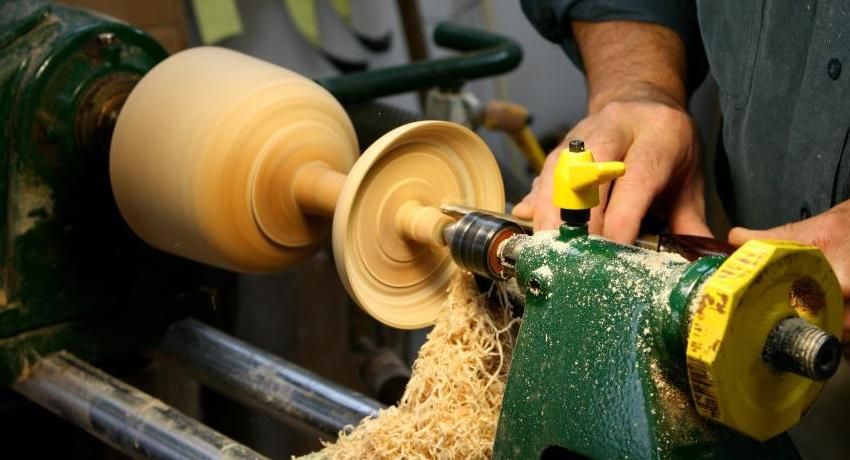From this article, you can learn the features and specifics of such a finishing material as heat-resistant paint on metal. The text outlines the main criteria for the selection of compositions, the classification of existing materials that are resistant to high temperatures, their advantages and disadvantages, the average prices for the purchase of popular dyes. The article considers the possibility of painting the metal surfaces of mangal, stoves, etc.
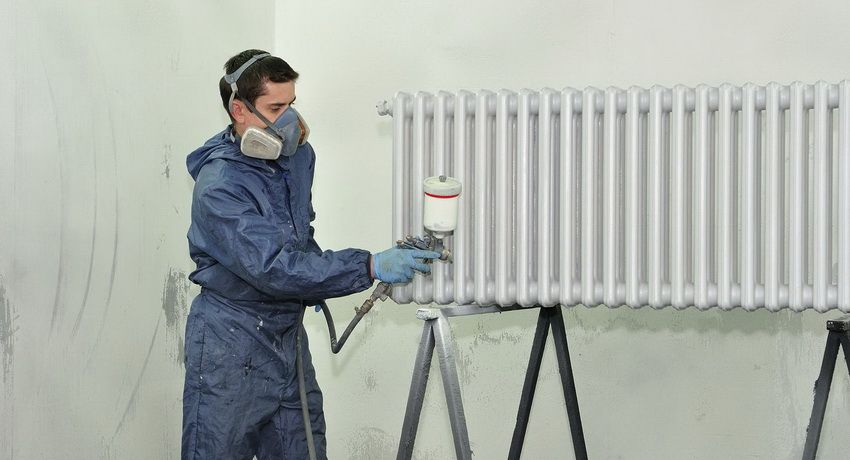
Heat-resistant paint on metal: properties and classification of compositions
Many owners of country houses are faced with the problem of finishing fireplaces, stoves and other objects made of metal. This type of material is vulnerable to exposure to moisture and other environmental factors, so updating the paintwork is aimed not only at maintaining an aesthetic appearance, but also at extending the operational life of the structure itself.
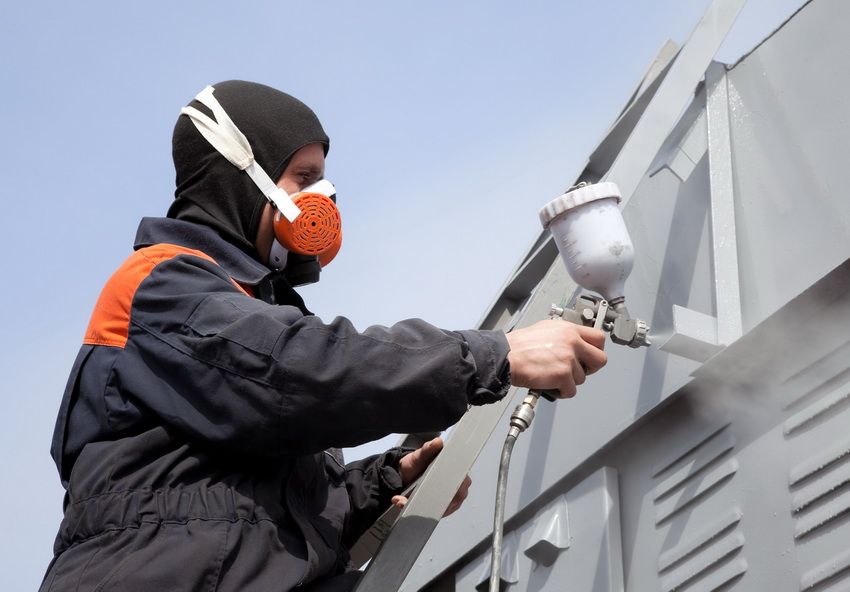
Not every finishing material can withstand high temperatures. Therefore, for the treatment of stove and fireplace designs, experts recommend buying heat-resistant paint for metal.
Note! The usual composition is able to withstand the influence of temperature not more than 40-50 ° C. The designs of iron furnaces installed in the bath, heated to 600-800 ° C. In the combustion zone, this figure can reach almost 1000 ° C. Professionals recommend choosing the composition according to the type of furnace, because the degree of heat resistance depends on it. For example, brick walls of furnaces are able to warm up only up to 200 ° C.
Features and properties of heat-resistant paint on metal up to 1000 degrees
The thermal stability of such dyes is due to the presence of organosilicon elements in their composition. In addition, the material contains fillers, polymers and coloring pigments. Thanks to these components, the dye provides metal protection against corrosion and environmental influences.
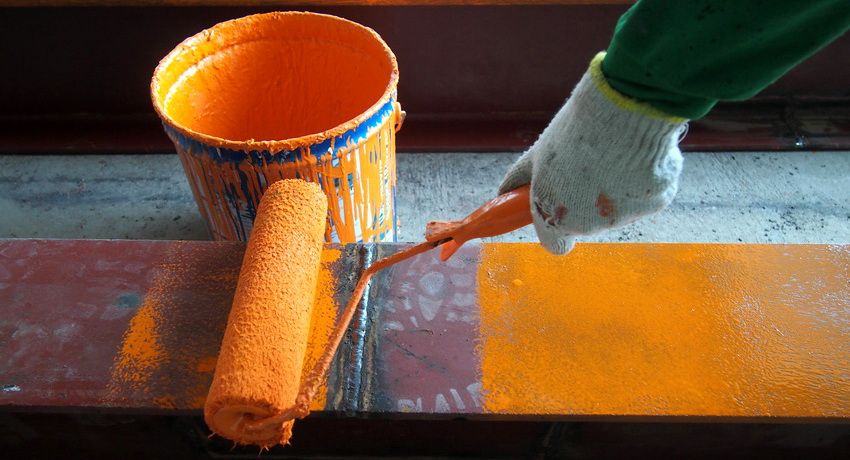
Polymers present in the composition, characterized by high strength. As a rule, they are made on the basis of oxygen, silicon and organic radicals. On this list of components that provide thermal resistance of refractory paint on metal for brazier or furnace, does not end. High stability due to aluminum powder.
The service life of most heat-resistant dyes reaches 15 years. The method of applying the material, as well as the volume of organic resins in its composition, affects the elasticity and adhesive properties of the coating, and the time it dries.
The advantages of heat-resistant paints for metal for furnaces:
- electrical insulating properties – the material is suitable for finishing metal structures through which electricity can flow;
- anticorrosive protection – heat-resistant paint prevents the destruction of the metal under the influence of moisture;
- resistance to the influence of corrosive environments – protection from the negative effects of chemicals;
- the ability to maintain properties at high and low temperatures, as well as sudden changes;
- plasticity – in the process of heating the metal is subject to expansion, so the finish will stretch instead of being covered with cracks and crumble.
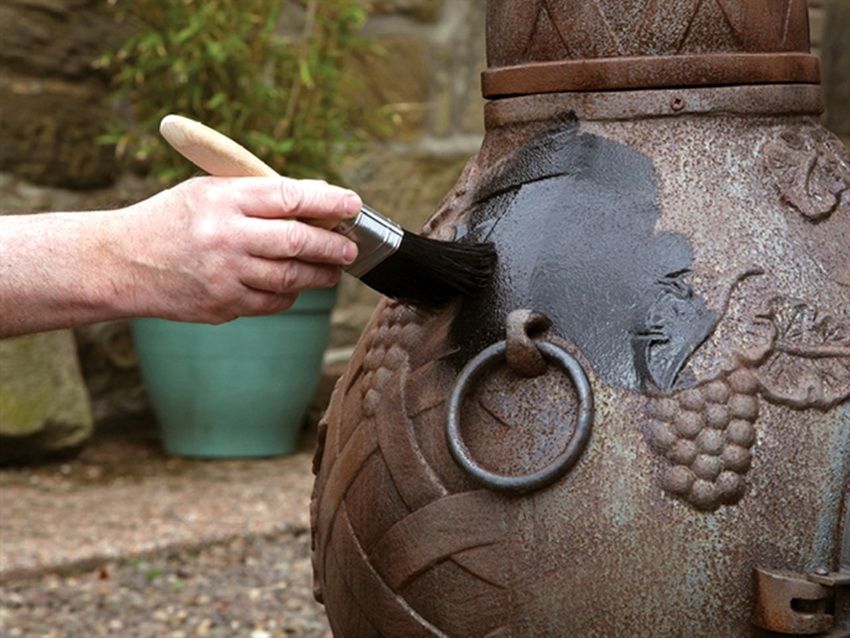
Heat-resistant dyes are classified according to various criteria. Most often, the compositions are divided by type of packaging. Consumers can buy heat-resistant paint on metal for a furnace or a brazier in the form of a can of 400-500 ml, cans (weight from 1 kg), buckets or barrels. The volume of the composition in the bucket can vary in the range of 10-20 kg. The capacity of barrels is 40 kg and more.
Note! The storage period of the heat-resistant dye depends on the manufacturer and components. However, the minimum period of any material is 7 months.
Materials also differ in the method of application. Most often for these purposes a roller, brush or sprayer is used. The composition consumption depends on the tool used to paint the surface. For example, if you apply heat-resistant enamel on metal with a brush, then the material consumption will be 20-40% more than when using a spray gun. The resulting coating is obtained almost the same in durability. An increased consumption of the dye is accompanied by the use of an aerosol method of application.

Regardless of the method of application, it is imperative to select a dye with high adhesive properties. In other words, the composition should be well fixed on the metal surface. Only under this condition can the coating provide a reliable level of protection against corrosion damage.
Heat-resistant dyes are used for finishing products that are operated in conditions of strong moisture and high temperatures.
The capabilities of such compositions will be useful for such objects:
- steam rooms;
- saunas;
- drying chambers (for these conditions it is recommended to buy fireproof paint for metal capable of withstanding from 600 to 1000 ° C);
- stoves;
- braziers.
Often resistant to temperature, the compositions are used for processing elements of heating systems. Enamels with similar properties are widely used in the automotive industry. Dyes for silencers, brakes, engine parts and other components are made specifically for this purpose.
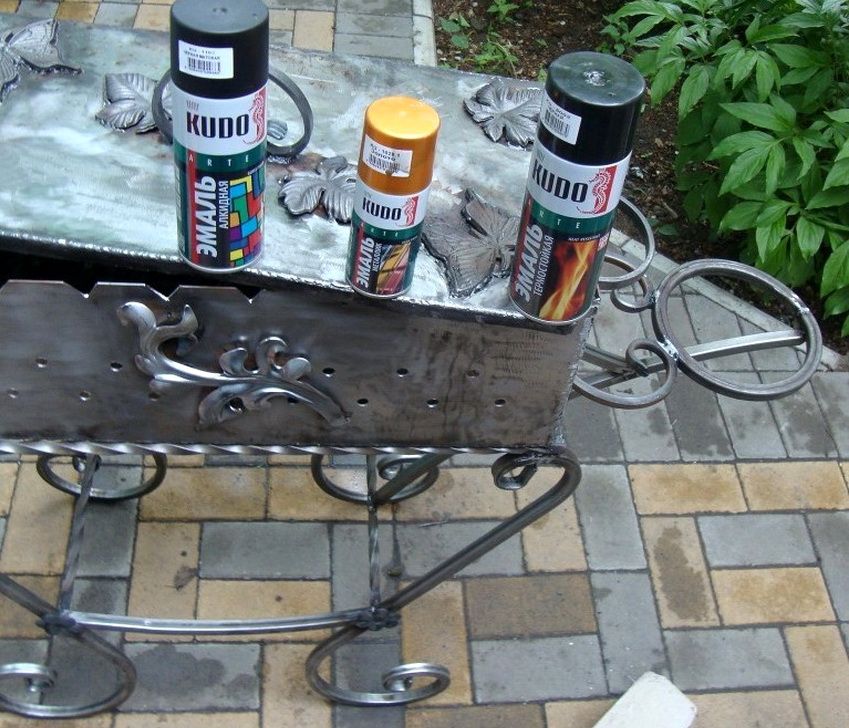
Mostly such dyes are used to treat metal surfaces, although compositions with similar properties for the treatment of bricks, stones and wood can be found on the market.
Important! Before purchasing a paint, it is imperative to familiarize yourself with the manufacturer’s instructions and its recommendations regarding the use of the composition on certain surfaces. If it is intended to open the furnace structure in the bath, care must be taken that the finish not only shows resistance to temperature, but also withstands the effect of moisture.
The composition of the components in the finishing material is extremely important. The degree of durability of the dye and the temperature conditions in which it can be used depends on this.
In view of the above, the following categories of compositions are distinguished:
- alkyd;
- epoxy;
- dyes based on heat-resistant glass and composite materials;
- ethyl silicate and epoxyether (one-component);
- silicone (single component).

Alkyd or acrylic dyes – used for processing parts of heating systems. They are able to withstand temperatures up to 100 ° C. The category includes materials with zinc and zinc phosphate compounds. The cost of 2500 to 5500 rubles.
Epoxy dyes can withstand exposure to temperatures not exceeding 200 ° C. Some types of dyes do not need preliminary priming on the metal surface. The average price of this category of dyes is in the range of 2000-8000 rubles. depending on the manufacturer and volume of the container.
The temperature limit of ethyl silicate and epoxy ether dyes is 400 ° C. The composition of such materials contains metallic powder. The price range for these types of dyes covers 3200-9000 rubles. per pack. Such compositions are used for processing grills and barbecue.

Single-component silicone compositions fully withstand the influence of temperature up to 650 ° C. Manufacturers use polymer resin silicone resins as the basis for creating such dyes. Often, aluminum powder is added to the material. The price of such paint varies between 300-6100 rubles.
Compositions with heat-resistant glass and composite materials can withstand temperatures from 650 to 1000 ° C. The price of refractory paint for metal of this type is 2500-8000 rubles. per pack.
In order to choose the optimal dye, it is necessary to take into account the main criteria put forward to materials of this type:
- heat resistance level;
- recommended staining temperature;
- time to complete drying (not more than 3 days);
- technical characteristics of the composition.
On sale there are dyes with varying degrees of heat resistance – from 120 to 1000 ° C. This indicator is selected taking into account the conditions in which it will be operated. The highest heating is characterized by a metal stove (800 ° C), the maximum limit of heating radiators installed in apartments is 90 ° C.
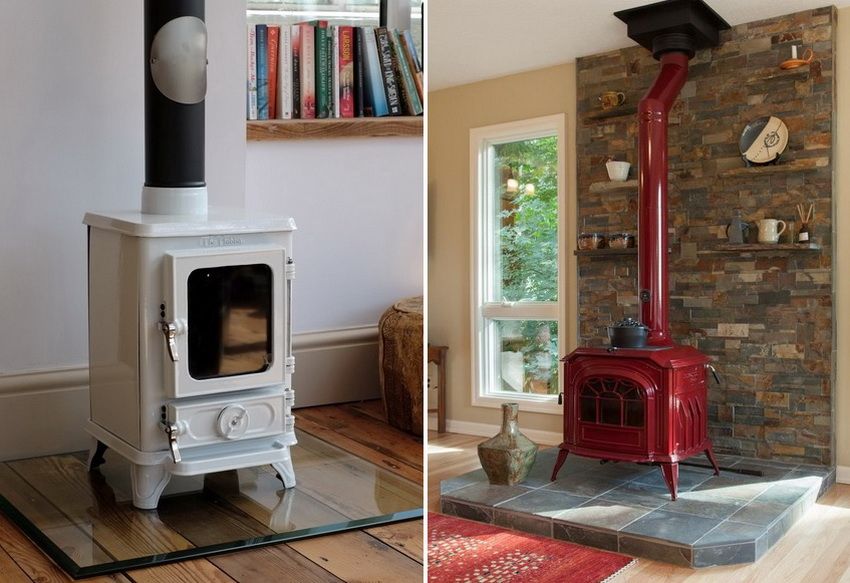
Helpful advice! If organic resin is added to the heat-resistant paint for metal, it is possible to speed up the drying time of the coating, as well as enhance the plasticity and adhesive properties.
The quality of the coloring result depends on whether all the requirements of the application technology are supported. These requirements include preliminary surface preparation, material overlay scheme, temperature conditions, which should be followed during operation. In most cases, experts recommend dyeing metal surfaces at air temperatures from -30 to 40 ° C. The subsequent operation and service life of the coating depends on this.
Metal surfaces, which are subjected to strong heat during operation, are coated with refractory, heat-resistant or heat-resistant dyes. Heat-resistant finishes are recommended for coating structures whose temperature does not rise above 600 ° C.
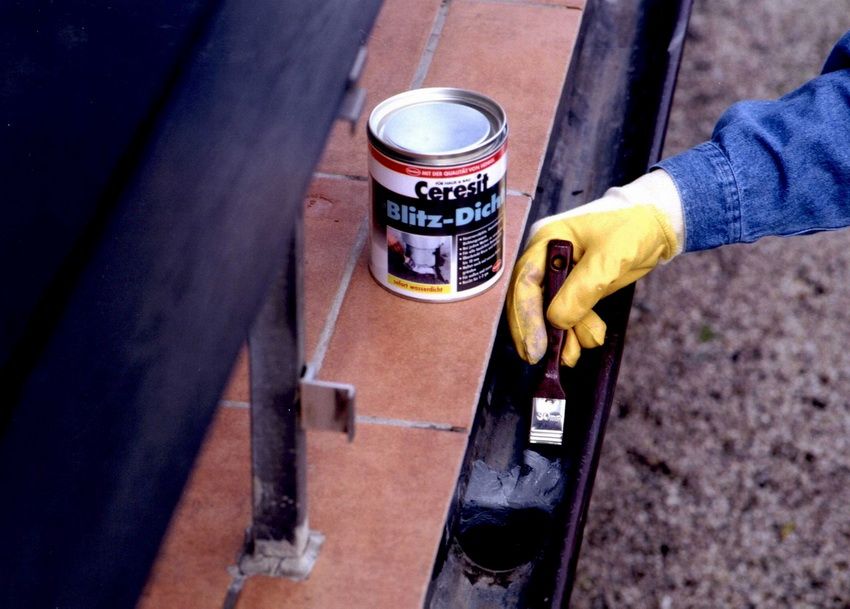
The use of such dyes for the treatment of metal parts of a brick kiln or structures completely made of this material, including barbecues, is allowed. In this case, it is not necessary to apply the heat-resistant composition to the surface of the equipment installed in the bath. Most often such furnaces heat up to 800 ° C. Therefore, it is better to use heat-resistant dyes for these purposes.
Fireproof finishes are designed to color products that are in close proximity or are in contact with open fire. For barbecues and barbecue is the best option. The use of such dyes for the treatment of other objects will be impractical and would entail unnecessary costs.
The alkyd dye Thermal from the Tikkuril brand forms a coating on the surface of the material that does not crumble for 3 years. Even if the metal is heated to a red glow, the dye will retain its properties and attractive appearance. The cost of a 330 ml can is 600 rubles. The material has one specific feature. The process of polymerization of the composition is possible only on condition that the treated surface is heated to 230 ° C for 1 hour.
The following types of paints are considered to be of equal quality: Hansa, Kudo, Bosnia, Hammerayt, Elkon. The recommended number of layers, the temperature parameters of the application and the requirements for the staining process are different for each manufacturer. To get a quality result it is very important to follow the instructions on the package.
